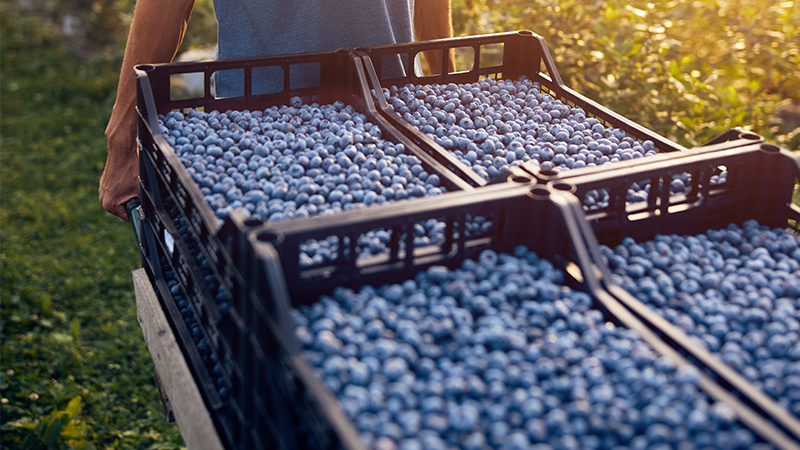Labor, Crop Management Will Determine This Year’s Crop Size
This spring’s series of disastrous weather events has wreaked havoc across many tree fruit production regions, but those lucky enough to be left with fruit on the tree face a couple other potential challenges that could be as pernicious as the low temperature, high rainfall, and hail events that have blasted Eastern states and California.
Of course, nothing counts until fruit is in the bin. Everyone is still a ways off from a successful harvest and weather events could still hit the Pacific Northwest as hard as other areas. Right now it appears we could harvest record amounts of tree fruit, but we still face a couple things that are about as difficult to control as the weather.
The first of those is labor. Usually, when my regional NPR station has a piece on agriculture it has to do with farmer’s markets supplying Seattle area consumers with heirloom fresh produce grown organically no more than 100 miles away. That is just fantastic, but what about the folks supplying the rest of the country with high-quality fruit products?
Someone must have been receiving my telepathic messages. Recently, my NPR station at times sounds like a morning ag show, with pieces lamenting the lack of chilling hours for California stone fruit, worrying about an invasive menace called brown marmorated stink bug, and projecting a serious labor shortage for commercial growers in Eastern Washington. I suppose that is a good thing and certainly hope it has raised public consciousness about the importance and economic impact all of commercial ag has in our state.
It’s also terrific that stories about fruit left rotting on the tree for lack of hands to harvest are broadcast before the fruit are actually rotting on the tree. Such images, whether projected or actual, are dramatic and do tend to create some public interest in the challenge producers of labor-intensive crops face every season. Last year in Washington, we even had images of prison inmates on a work release program picking fruit because our usual labor force was not available. That gets people talking!
Keep An Eye On Crop Load
However, it is not just labor shortages at harvest time that raise concern. So far this year Washington apple and cherry growers have been fortunate, with excellent conditions to set absolutely huge crops. We should manage that crop load for the usual reasons — improving fruit size and quality in both crops and reducing biennial bearing in apple.
Excessive crop loads will produce a lot of small cherries, and small cherries are not worth much. Excessive crop loads will also produce a lot of small apples. This year, given the damage to production in eastern areas, our small apples may be worth more than usual, but the risk of biennial bearing must be minimized in a year with excessive bloom and set like this one. That means serious, costly, real-time management decisions on aggressive bloom and postbloom thinning programs, plant growth regulators, reflective fabric, nutrition programs, etc. These are horticultural decisions that producers make every day, hopefully based on sound research and excellent Extension.
While such decisions are not trivial, they are familiar. Less familiar are those decisions regarding orchard management when a producer faces potential shortages of appropriately skilled labor, as we have in the past couple seasons. While orchard labor management has always been critical, the present situation magnifies its importance and can mean the difference between economic success or failure. Allowing new, self-fertile cherry cultivars on Gisela rootstocks to set too much fruit, as they love to do, especially with a nice spring like we have had, leads not only to too many small cherries, but to irretrievably stunted trees. Many sweet cherry blocks have been hand-thinned this spring, or some of the new mechanical thinners put to use. This takes more people and means more money sunk into the crop.
Those apple growers who deferred their thinning to green fruitlet time will have to compete with pickers making a couple hundred dollars a day in a cherry block down the road. The bargaining power a harvest crew has at cherry picking time is greatly enhanced when there is a labor shortage and many apple blocks will not be properly thinned. Well before we get to apple harvest, folks will be scrambling for bins, regardless of labor availability. When we get to picking, tough decisions will be made about harvest maturity and logistics. We do have some chemical tools to manage fruit ripening, but they are limited, not always predictable, and add dollars to the input side.
The market value of a given block will be of huge importance. Many blocks of Red or Golden Delicious will be delayed or ignored if a higher value cultivar is ready. Many blocks will be picked before or after optimum maturity, causing downstream problems with storage and consumer acceptance.
I am certain the tree fruit producers in areas without a crop would just love to tell me to stop whining — they would welcome the problems labor shortages cause with a bumper crop! At the same time, next season, when Michigan is back into full production and we face disaster in Washington, or wherever, our national labor shortages will remain the same, or be worse. The weather has always been our biggest foe, but increasingly labor is the force that will dictate the economic sustainability of our country’s tree fruit producers.










